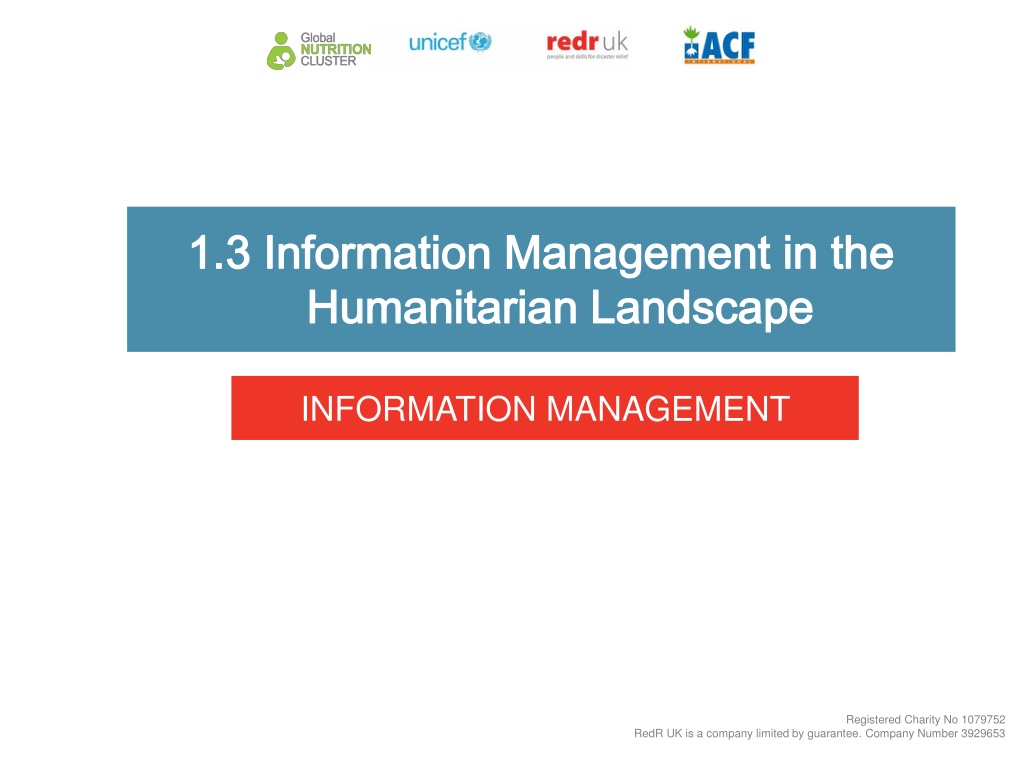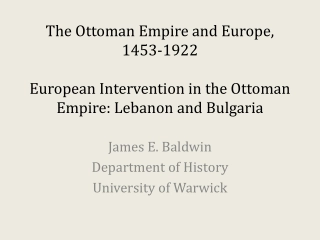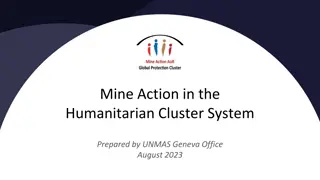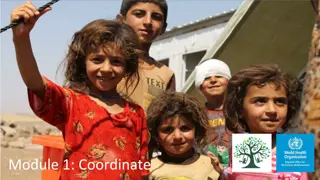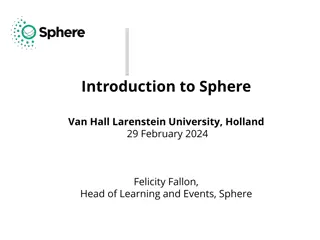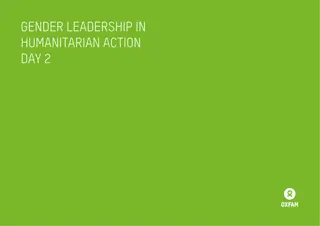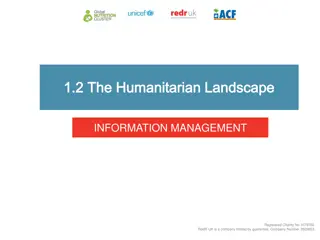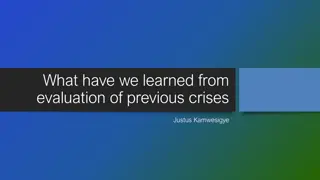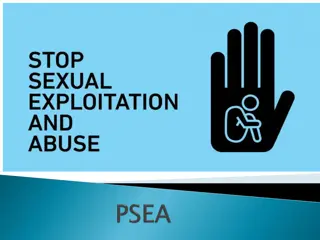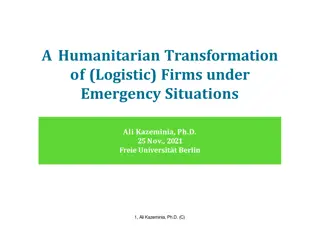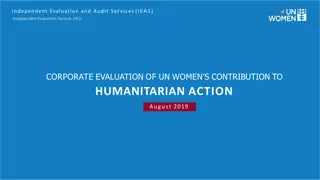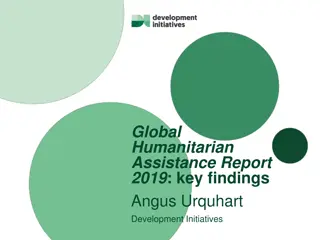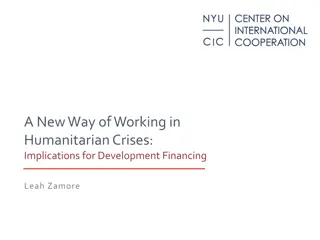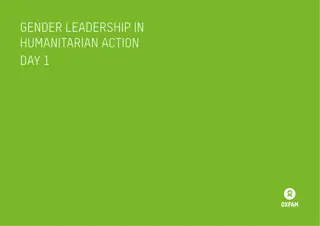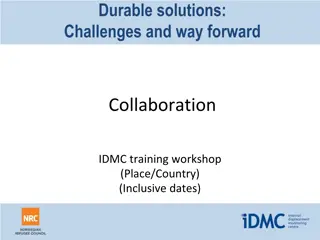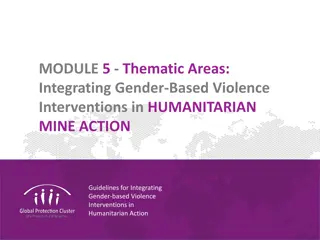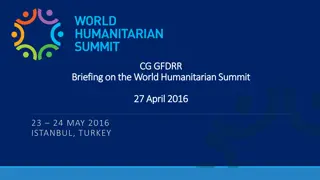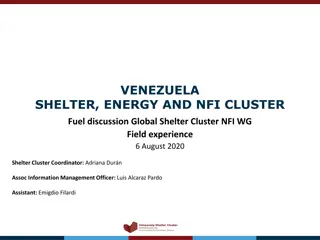Information Management in Humanitarian Operations
Explore the critical role of Information Management (IM) in the humanitarian landscape. Understand decision-making processes, key IM building blocks, and tools supporting various sectors like nutrition and gender-based violence response. Dive into the situational analysis, response strategies, and different decision types crucial for effective aid delivery and advocacy efforts.
Download Presentation

Please find below an Image/Link to download the presentation.
The content on the website is provided AS IS for your information and personal use only. It may not be sold, licensed, or shared on other websites without obtaining consent from the author. Download presentation by click this link. If you encounter any issues during the download, it is possible that the publisher has removed the file from their server.
E N D
Presentation Transcript
1.3 Information Management in the 1.3 Information Management in the Humanitarian Landscape Humanitarian Landscape INFORMATION MANAGEMENT Registered Charity No 1079752 RedR UK is a company limited by guarantee. Company Number 3929653
Objectives: Describe the types of decisions being made by various strategic and operational actors and how IM fits into this. Explain how the IMOs support decision making by establishing an effective IM system based on the key IM building blocks. Define information management and describe the difference between data, information and knowledge. Define how IM tools can collect information on the cross-cutting issues as gender and GBV (GBVIMS) and share within the humanitarian actors in respect to do no harm principle for a better response programme. List IM tools and processes that support nutrition cluster response. Identify tools, templates and guidelines that are available in the GNC IM toolkit.
The Situation WHO is affected? WHERE are they located? WHAT are priority areas and needs? Existing resources and gaps Hazards, infrastructure, security and access
The Response WHO is responding? WHAT are they doing? WHERE are they located? HOW do I get and share information on the response?
Decision Types: Needs, Response, Gaps - = Needs Response Gaps People in need not yet reached by aid Total people in need reached with aid Total people in need as result of crisis
Decision Types: Targets, Response, Gaps As Nutrition Cluster usually does not have capacity to address all population in need, partners set up targets that are less than 100% of people in need - = Targets Response Gaps People targeted not yet reached by aid Total people in need reached with aid Total affected people targeted
Decision-types: Operational, Strategic and Advocacy Prioritization Informing Operational Decisions Strategic Decisions Advocacy Cluster did not have latest information on IYCF practices and agreed to focus early IYCF assessments on 20 municipalities in Province B as 70 per cent of displaced people have moved there. Nutrition cluster advocates for immediate release of 900K to provide skilled life-saving IYCF-E interventions to 120,000 boys and girls under age of two in Province B Based on the IYCF assessment 120,000 boys and girls under age of two in Province B were prioritize for IYCF-E interventions
Humanitarian Decision-Making Hierarchy Strategic decisions for overall response Inter-cluster decisions Cluster decisions
Information Management Definition Information management is a systematic process for the collection, collation, storage, processing, verification, and analysis of data and dissemination to humanitarian stakeholders, to support effective and timely humanitarian action.
Definitions Knowledge Interpretation Information Data
Exercise: IM Tools in the HPC Make a list of the IM tools and information that are used for your assigned stage of the HPC
GNC Tools & Resources to Enhance IM www.nutritioncluster.net
GNC Tools & Resources This website is intended to serve as a repository of relevant tools, guidance and resources for Nutrition Cluster Coordinators and partners working at country and global levels. Key resources on: Cluster Coordination Information Management Knowledge Management Nutrition in Emergencies Inclusion of cross-cutting issues are suggested to update IM data (e.g. gender analysis)
What is the GNC IM Toolkit? A resource to help Information Managers, Coordinators, Partners or other interested groups improve the flow of critical information during an emergency response.
GNC IM Toolkit Dashboards templates Key datasets IM Surveys database HIR HRP tips 4 W Checklist Gap analysis tool IM Update PPT template Caseload targets & supplies Map Partners reporting tool M&E examples/ templates Framework Financial tracking tool BMS Code Violations tracking Country bulletin template ToR for IMO Capacity mapping IMO Meeting agenda template Meeting minutes template Web-site for HR.info Guide NC Style Guide Contact list template handover template
IM Toolkit: Resources for all stages of the HPC General Tools: Map and dashboard templates ToR for IMO Meeting agenda template Meeting minutes template NC Style Guide Contact list template IMO Handover template IM Checklist Surveys database Key datasets Indicators registry Capacity mapping tool 4W M&E Framework HRP tips Gap analysis BMS code violations tracking tool Country bulletin template Web-site for HR.info Guide IM Update PPT template Partner reporting tool Caseload, targets and supplies calculation tool Financial tracking tool Capacity mapping tool
